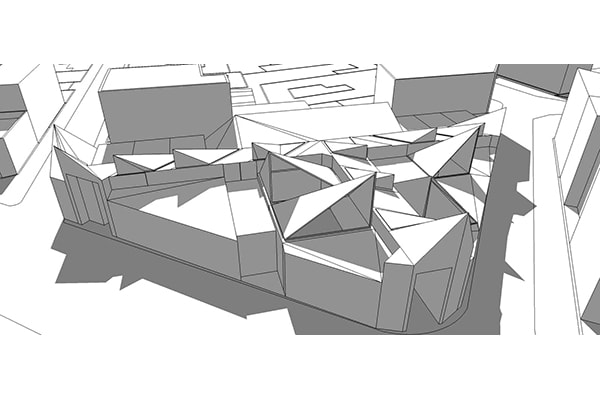The techniques of architecture, in the sense that they will be considered here, are simply the ways in which structures are formed from certain materials. These styles are influenced not only by the availability and character of materials but also by the overall technological development of society, as architecture depends on an organized workforce and on having the tools and skills to secure, manufacture, transport, and work durable materials.
The evolution of technologies is conditioned by two forces. The first is economical – the search for maximum stability and durability in construction with a minimum of materials and labor. The other is expressive – the desire to produce a meaningful form. Technologies develop rapidly when economic requirements suggest new expressive forms or when the concept of new forms requires new actions. But it remains constant when architects avoid pioneering risks in untested and possibly unsuccessful ways and instead rely on proven procedures or when the need to observe tradition or to communicate ideas or elegance and presentation is best fulfilled through familiar forms.
The ultimate purpose of building techniques is to create a stable structure. Mechanically, structures are stable when all their parts are in equilibrium or a state of rest. Walls and ceilings can crack, crack, or collapse if not designed properly. These movements are caused by forces that tend to push or pull objects in a particular direction. The forces acting on any member (part) of the building are, firstly, its weight and, secondly, the loads it carries, mainly from other members but also from people, furnishings, wind, etc. Their action encounters a reaction in the opposing forces that hold the organ in place through resistance at its joints. These forces may be active in all directions and must be balanced for stability. They tend to crush, separate, and bend the organ – in other words, to change its size and shape.
Within the organ itself, there are also forces that tend to resist any deformation. They are called pressures, and they differ depending on the strength of the material and the shape of the organ. The types of pressure considered are the pressure that resists cracking; a tension that resists disintegration; and bending, which occurs when one part of the organ is in a state of compression and the other is in a state of tension. The shaft is compressed by the loads it carries; In the pointed roof, the piece that forms the base of the triangle is subjected to tension by the external thrust forces in the sides; The beam or girder (the member that spans an area) is flexed by loads and forces pressing on its top and experiencing a reaction force at its ends. Some materials are only strong in compression (eg stone, brick, cast iron, concrete) and others are also in tension (eg, wood, steel, reinforced concrete), so the latter is more efficient in resisting bending forces.
Finally, the stability of the overall structure whose members are all in equilibrium is achieved by shifting the loads from each of them down so that they can be resisted by the upward supporting forces of the earth.
Techniques will be discussed in terms of properties of building materials and methods of their use in architecture (see Building construction).
